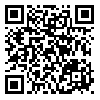Background and Objectives: Leadership measurement in health care industry is essential in order to determine the situation, and also to improve and promote the leadership. The most frequently used international model in the world is Malcom Baldrige Model. Maximum score in this model is allocated to the leadership criterion.
The aim of this study was leadership evaluation of emergency departments of General -Teaching Hospitals of Iran University of Medical Sciences and Health Services based on Baldrige excellence model.
Materials and Methods: This cross sectional study was implementd in the emergency departments of Rasoul Akram and Firouzgar hospitals. Data were collected and compared with the responses of the 2007 version of the questionnaire model. Leadership performance was evaluated with Approach, Deployment, Learning, and Integration.
Results: The emergency department of Rasoul Akram hospital obtained 25 scores(20%), and Firouzgar hospital obtained 20 (16%) scores out of 120 in the leadership criterion.
Conclusion: Leadership of emergency department of studied hospitals was in the primary levels of Excellency. As in the Baldrige model, scoring system is used for the continuing improvement, promotion and excellence in the organizations, the researchers suggest continuing improvement process evaluation, and self-assessment in the emergency departments.
Key words: Evaluation, Leadership, Emergency Department, Baldrige Model
Funding: This study was supported by Young Researchers Club.
Conflict of interest: None declared.
Ethical approval: The Ethic s Committee of Islamic Azad University, Science and Research Branch approved the study.
Received: 2010/02/24 | Published: 2010/04/15
| Rights and permissions | |
 |
This work is licensed under a Creative Commons Attribution-NonCommercial 4.0 International License. |



